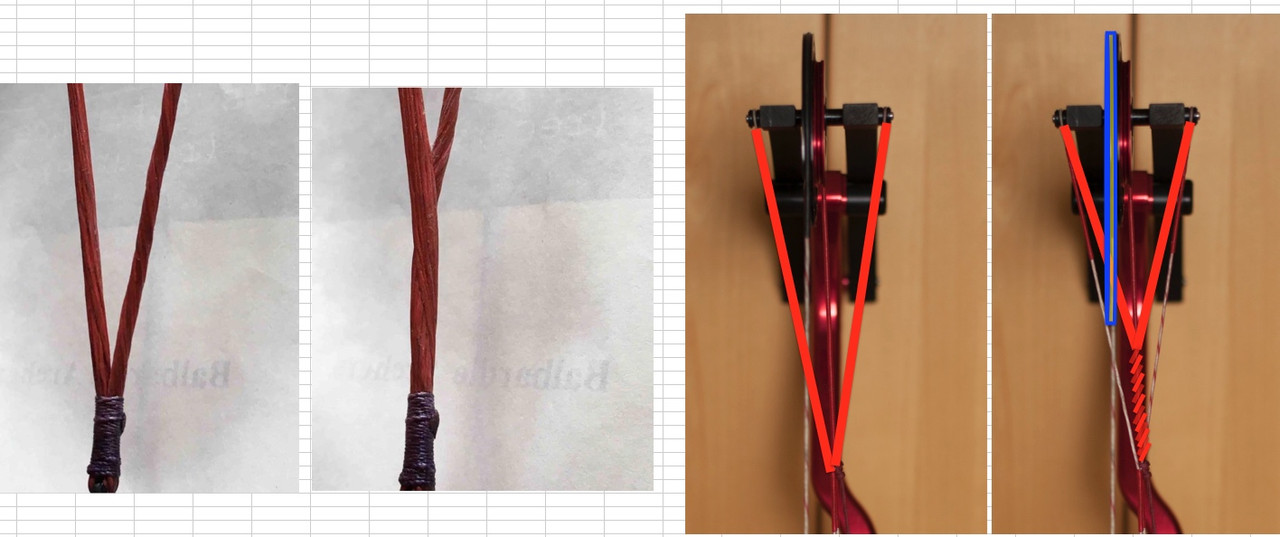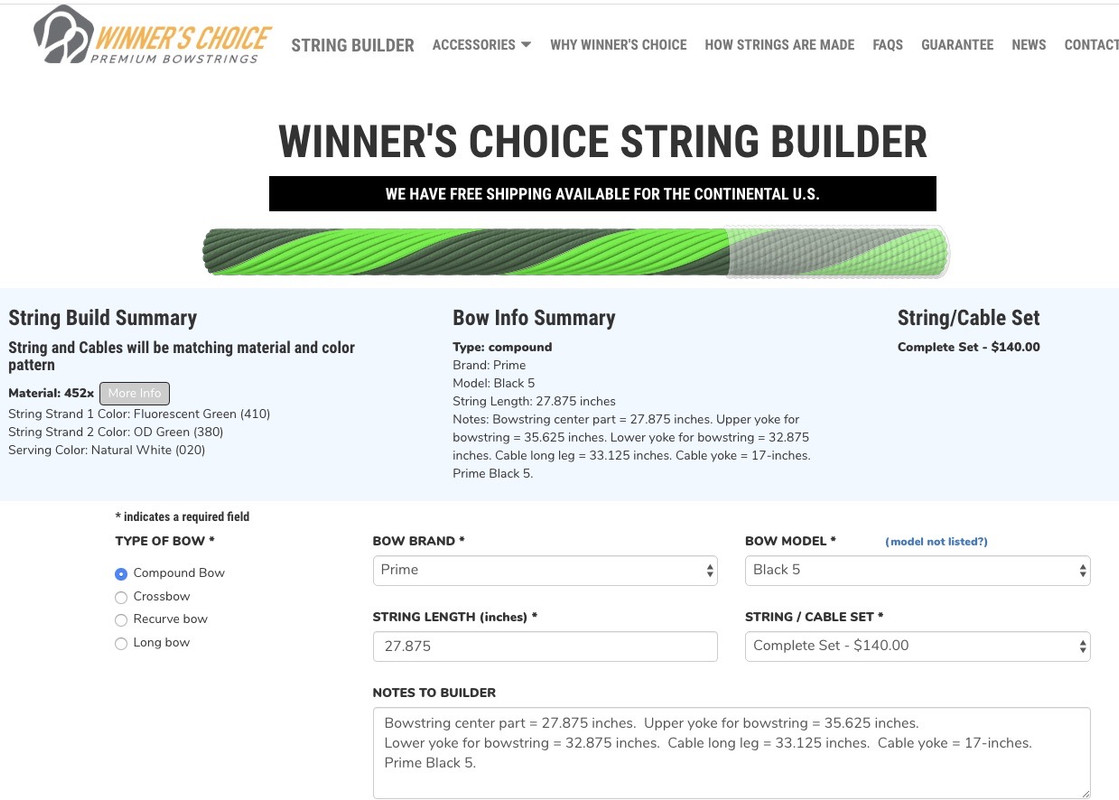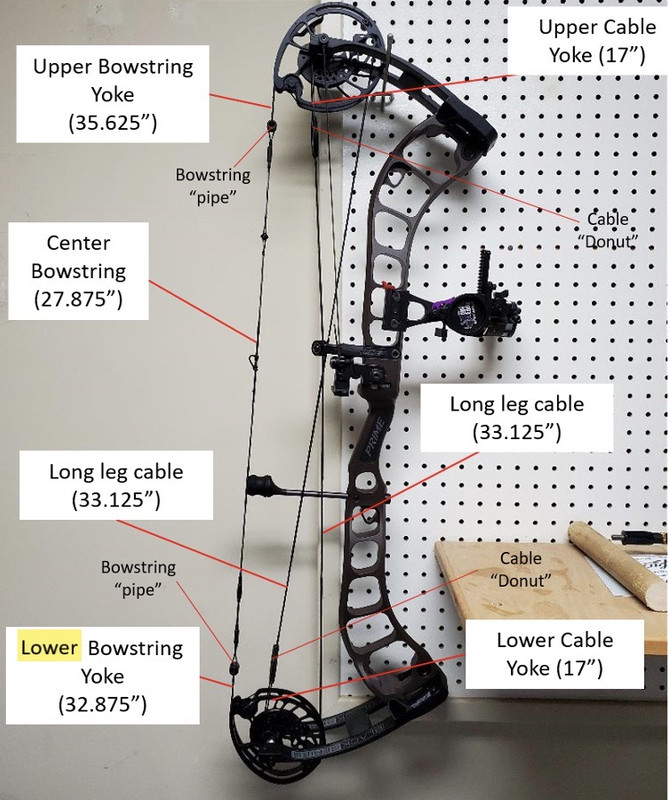IGNORE the timing dots. Timing dots will ONLY match, if you confirmed that both cables are exactly the same length under tension, before you installed the cables.
IGNORE the timing dots. Timing dots will ONLY match, if both limb bolts are the exact same number of turns away from max.
IGNORE the timing dots. Timing dots will ONLY match, if both limbs are exactly the same deflection.
So, how do I know my bow is IN SPEC, if I IGNORE the timing dots? Forget spec, and focus more on shooting results. Huh? What do ya mean by shooting results?
Shoot arrows, like this. 20 yards. Shoulder high target. Horizontal strip of masking tape. Aim at the top edge of the masking tape.
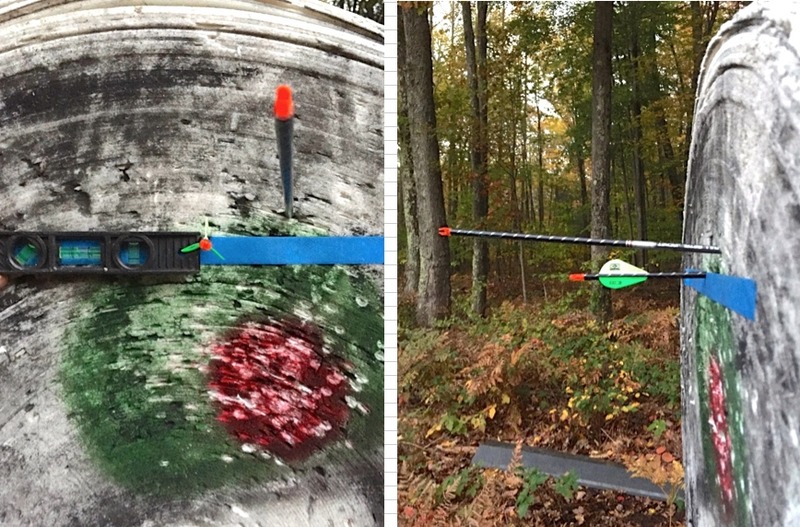
One fletched and One bareshaft arrow. So, ignore the ANGLE, cuz you might be using a bag target. FOCUS more on the height of the impact for the two arrows. If the HEIGHT of impact is different, then, you have to tweak the half twists in ONE cable. Pick ONE cable, and you figure out if you need to add or remove a half twist. Yes, a half twist will make a difference you can see at 20 yards. Do enough half twists, in the correct direction, and you get this result.
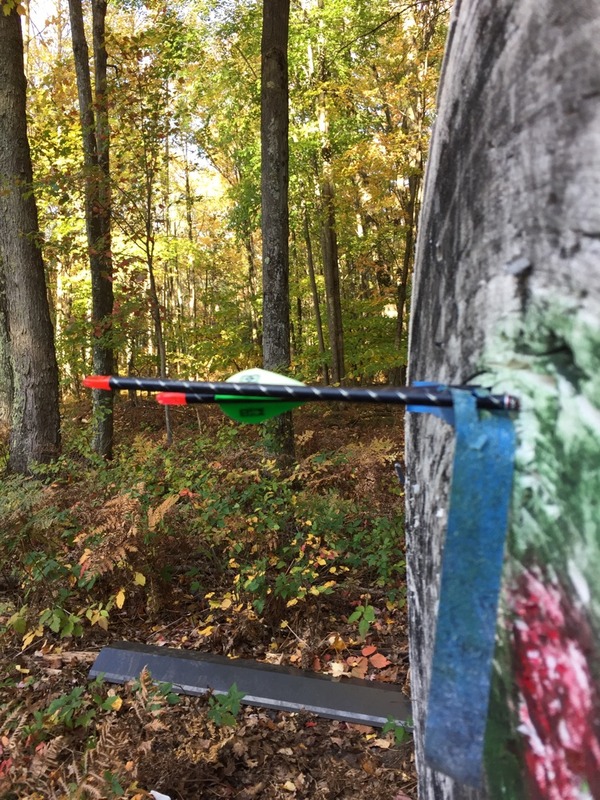
K. BUT, what about my timing dots? They are mis-matched and it just LOOKS ugly...you know, gots to have matching TIMING dots.
1) If your form is whack, the timing dots will not match. What is whack? Excess pressure from bow hand at top of grip or excess pressure at bottom of grip.
2) Limb bolts are mis-matched. If one limb bolt is 1/8th turn, 1/16th turn more or less than the other limb bolt, timing dots will not match. BUT, I gots to have my timing dots match. The LOOKS of my timing dots are more important than my groups. Gotta LOOK good, when shooting. FINE. Then, you can use the limb bolt (ONE limb bolt) to make timing dots MATCH. Take ONE limb bolt (you have to figure which one), and remove 1/16th turn, remove 1/8th turn, so ONE limb bends more than the other limb, and keep tweaking that ONE limb bolt, until your TIMING dots match. Now that your TIMING dots match, and it LOOKS good at brace, go shoot again.

Ah man. You mean I gotta press the bow again, and do the half twist thing on ONE cable??? Yup.

K. Got this result again, but my TIMING DOTS are not matching again...less mis-match than before, but still, my TIMING DOTS look just UG-LEEEEEEE.
K. TWeak ONE limb bolt again, to make your TIMING dots pretty again. You are fine tuning ONE limb bolt, to get both limbs to bend EQUA-LEEEEEEE. Go shoot again.
Dang it. Got this again.

You know what to do. Press the bow, and tweak ONE cable, by the half twist, until you get this.

But, u know what happened, my TIMING dots don't match, they close, but they don't match. Do this enough times, and you will either FIND the exact amount to tweak ONE limb bolt, to get EXACTLY the same limb deflection, that compensates for your whack bow hand, which might be exerting un-even pressure, so that your timing dots MATCH
and you get this result.

Most folks leave their bow hand be as-is, and MOST folks eventua-LEEEEEE give up on matching timing dots, and just settle with tweaking ONE cable by the half twist,
until they can shoot groups like this.
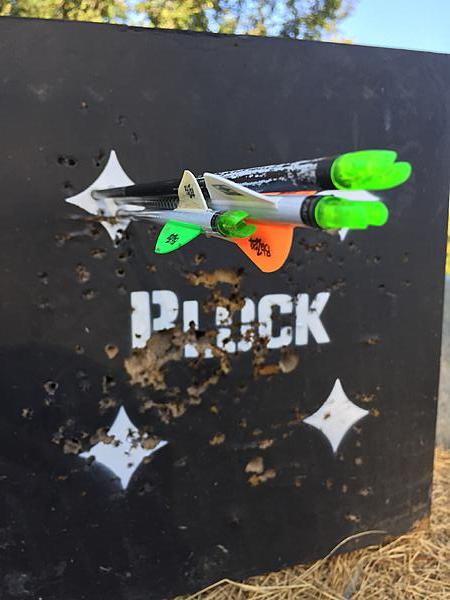
Fixed blade broadhead, fletched field point, bareshaft field point...20 yards by schuler26.
or this.
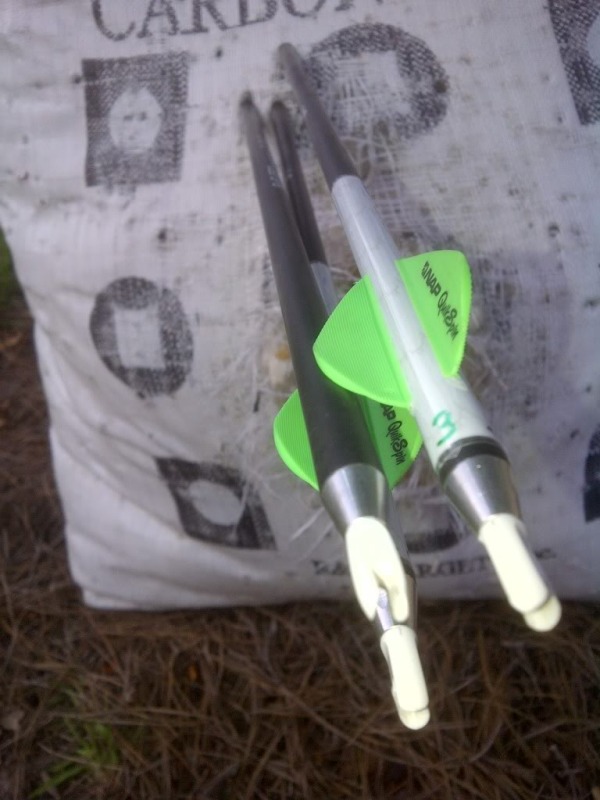
Target arrows, bag target at 30 yards by flopduster.






